Education is the basis of all civilization, and it is the only way for an individual to find their place in society. Without education technology would be non-existent, and it is only fitting that technology, now that it is as advanced as it is, can help us re-design and improve education to be far more efficient than before.
The Problem with Classic Education
For centuries education has gone on in basically the exact same way; students would attend a class in a classroom with potentially hundreds of their peers, listen to a lecture, go home, do their homework and study for the exam. This is a system that has seemingly been very efficient for many years, and has produced many well-educated, successful people. However, it’s also a possibility that we think this system is efficient simply because we as a society had no alternative up until now.
Many schools and colleges are now transitioning to a more modern type of education, aided by software and technology, but many still cling to the traditional, proven method of pen, paper and auditory. Let’s take a quick glance at this traditional approach to education, and see how it compares to the ever-evolving concept of online learning and why you should maybe consider an LMS for your further educational needs, whether you’re a student or a tutor.
Administration
Running a traditional educational institution is a lot of work, mostly because a lot of the things are being done by hand. For every little process there exists some form of paperwork that has to be filled out, validated (sometimes by several different people), and this all takes a lot of time and money that could be spent elsewhere.
This problem is mainly due to the fact that, even though computers and technology in educational institutions are being used more than before, they still aren’t being nearly utilized to their full potential, so most of the administration still relies on human labor. Computers are mostly used for organizing online timesheets, sending e-mails, and other very basic functions that most people can get a grasp of quickly. There’s also the issue of training people that don’t have that much experience with computer use, which is a good investment but not one that many educational institutions are willing to make.
Costs
One of the main disadvantages of the traditional approach is simply the fact that both students and the university itself are burdened with costs that are simply unavoidable. Books can be very expensive, especially large textbooks from reputable authors, and of course it’s absolutely against the law for the university to scan and copy anything from it, even for educational purposes. If a single textbook costs $20, and there are 400 students per year per course, then that’s $8,000 spent on just one book – and there are many of them. Surely these are funds that could’ve been used in a better way by both the faculty and the students, and this is probably the main argument against the traditional approach to education.
On the other hand, when using an LMS for teaching, most tutors tend to create their own learning materials, which they share with the students free of charge – after all, it’s in their best interest for the student to gain as much as they can from the course and become a well-educated individual, and the teachers themselves gain nothing from insisting that students buy learning materials.
Favoritism
A very sad fact of life is that human beings are unavoidably subjective, even if we try not to be, and because of this, favoritism in education is inevitable. It’s extremely unfair when a student, despite their best efforts, gets shoved to the wayside because a teacher favors one of their peers instead of them. This doesn’t have to be very obvious favoritism, as most professionals tend to try and be as objective as possible. But subjectivity is a part of human nature, and simply knowing the name or recognizing the handwriting of a student on a test can impact the teacher’s decision to give them a lower or higher grade, even if it’s just a little bit.
When using an LMS (a learning management system), the software is built in such a way so the computer handles all the grading. Not only does this mean the grading will be done much faster, but it will also be completely objective.
The Solution: Classroom 2020 College Edition
If you’re considering to make the switch to e-Learning, the first thing you’re going to have to do is decide which LMS you’re going to use. LMS is short for learning management system, and put simply it is a piece of software that includes all the features you need to teach a course to any number of students.
With Classroom 2020: College Edition you have many such features at your disposal – for example, the test creation feature allows you to quickly create many different variants of tests from a custom-created question pool, based on different parameters. Classroom 2020: College Edition can help you single-handedly and quickly create your own custom study program, arrange courses, and keep track of which students are taking which course – all within the same application. And finally, Classroom 2020: College Edition also includes a sophisticated statistics module that helps you track information about your students, courses, tests etc., which makes it easy to make quick comparisons and get the information you need to improve your course in the future.
Now let’s talk about a few advantages that you as an educator can receive from using an LMS such as Classroom 2020 College Edition, and why you should consider doing so in the future.
Convenience
First of all, using an LMS for your education is convenient both for you and your students. The concept of superior connectivity when teaching and learning online is something you just don’t have in the conventional approach. One advantage of this is that your students don’t need to be in the same physical space as you anymore. They can attend the lecture remotely across the Internet despite all the conditions that might have rendered it impossible to physically attend a class (weather conditions, perhaps they live very far away and it is costly for them to travel, etc.).
Another example of why this is advantageous is that you can quickly and easily update any learning materials within the LMS itself, or via a simple Cloud platform. You can then share these with your students without having to give them a hard copy of a book that they need to copy, which is a process that takes a lot longer especially if there are a lot of students that require this. It’s simply more convenient in every possible way, simply because of the fact that you’re dealing with advanced technology.
Higher Efficiency
Computers and software lack the human ability to create an original idea and improvise, but other than that they’ve pretty much got us beat in every other area – including efficiency. A modern computer processor can execute a billion different operations per second, at a speed unparalleled to what any human can do, and this has made them ideal for automating all sorts of tedious tasks that don’t take that much brainpower but use up a lot of your time.
There are a lot of applications for this in education, and every modern LMS will have these features already built-in and ready to use.
Multimedia and Interactive Environments
A major advantage of using an LMS for education is the fact that you’re no longer able to share just text and simple pictures with your students. Multimedia of all kinds can now be used, and this helps create an interactive environment with the students, in which they’ll be able to learn and progress much more quickly than if they were studying from a plain textbook.
If you’re creative enough, you can even use an LMS to create an interactive environment on the tests themselves, which is far superior to the traditional pen-and-paper style exam.
Conclusion
It is inevitable that technology will start playing a bigger part in our lives as it evolves further, and despite much prejudice this can only serve for the betterment of our education, and quite frankly, anything else that technology touches. More automation means more efficiency, more time for the human mind to focus on what it is actually needed for, and a better-educated workforce that will better serve society.
If you haven’t already considered using an LMS to teach and learn, now might be the right time to do so. Be sure to check out Classroom 2020: College Edition, as it offers everything an LMS should have at a fair price, so you can start enjoying the benefits of automated learning as soon as possible.


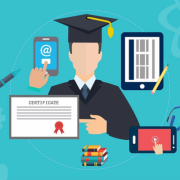
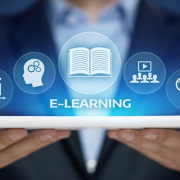
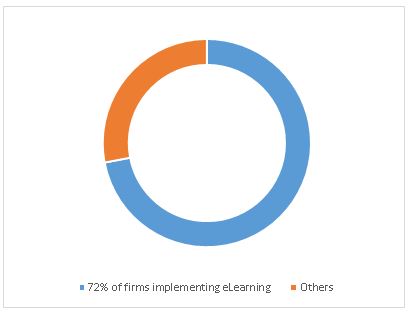

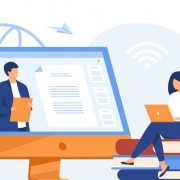

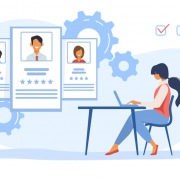 youtestme
youtestme





